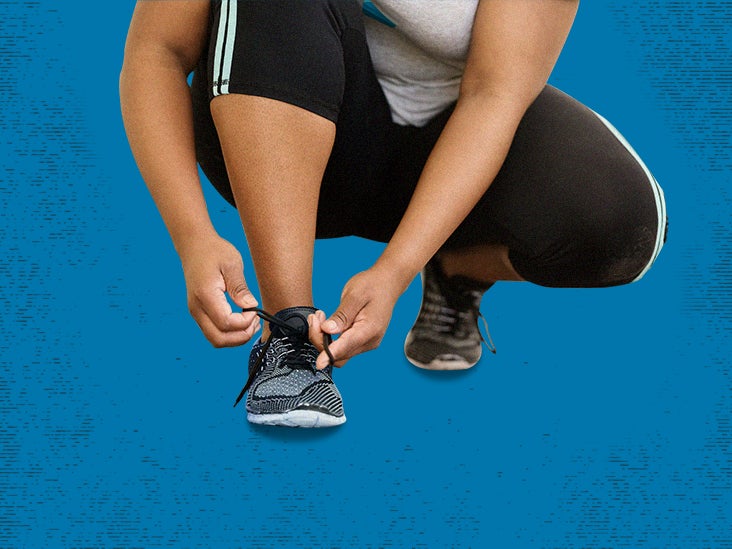
We include products we think are useful for our readers. If you buy through links on this page, we may earn a small commission. Here’s our process.
Plantar fasciitis is a common condition that causes pain and discomfort in the heel while walking and running. Finding a suitable shoe may be one option to help reduce discomfort and pain.
Plantar fasciitis is one of the most common causes of pain on the bottom of the heel. Approximately 2 million people receive treatment for plantar fasciitis every year.
People with plantar fasciitis will likely require extra cushioning in their shoes to provide support and minimize foot and heel pain. Some people may also benefit from orthopedic shoes or other alternatives, such as insoles, to help manage plantar fasciitis.
In this article, we explain what factors can make a shoe suitable for people with plantar fasciitis and what to avoid. We also provide a list of options that people may wish to consider trying.
Plantar fasciitis is a common condition involving irritation and pain in the connective tissue called the plantar fascia, which connects the heel bone to the toes. A 2018 study notes that it is the most common cause of heel pain in the United States.
The most characteristic symptom is a stabbing pain under the heel. Often, this pain is worse with the first few steps in the morning. The condition generally occurs due to overuse and stress in the area, such as from prolonged standing or walking. Other risk factors include:
- repetitive impact or pressure from exercise, such as running
- having flat feet, high arches, or tight calf muscles
- age, as plantar fasciitis is especially common in people between the ages of 40 and 60 years
- being pregnant or having overweight or obesity, all of which put more pressure on the feet
- having certain medical conditions, such as arthritis
- wearing high heeled shoes regularly
Additionally, wearing a shoe that is unsuitable for the structure of the foot may contribute to plantar fasciitis by putting pressure on different areas of the foot or not allowing it to take its natural shape while walking. Finding the correct shoe is, therefore, an important part of limiting or avoiding plantar fasciitis symptoms.
Some research notes that about 75% of cases go away on their own within 1 year. However, many people need to take long-term measures to avoid stress in the plantar fascia and prevent the pain from coming back.
Wearing supportive and comfortable shoes may help reduce the impact of putting weight on the feet. The American Academy of Orthopaedic Surgeons provide a guide to choosing the right footwear.
In general, a shoe should support the foot while also allowing it to move naturally. In this way, it helps minimize the pressure on sensitive areas such as the plantar fascia.
Shoes also provide varying levels of shock absorption to reduce the impact of walking on very hard surfaces. This feature may be especially important for people with plantar fasciitis.
While the best type of shoe may vary slightly from person to person, it is generally important to find a shoe that has good cushioning and support in the heel, enough arch support, and a flexible insole.
This combination may help the foot move more naturally while also reducing shock and impact.
There are also some things to avoid when seeking a suitable shoe for plantar fasciitis.
In general, shoes that are too restrictive or tight may not allow the foot to move naturally. They could increase pressure unnaturally throughout the foot, which may aggravate conditions such as plantar fasciitis.
Shoes that raise the foot significantly, particularly those that lift the heel high above the toes — such as very high heels or wedges — may also aggravate symptoms or increase some other risk factors.
Additionally, minimalist shoes, which manufacturers design to mimic the feel of walking barefoot, are not a good pick for people with plantar fasciitis.
Many suitable shoes are available for people with plantar fasciitis to buy. Below, we list five products that people may wish to try. The American Podiatric Medical Association (APMA) have awarded the following shoes the APMA Seal of Acceptance/Approval.
Please note that the writer of this article has not tried these products. All product information is purely research-based.
Vionic Men’s Khai Casual Slip On
Vionic offer a range of shoes designed for those with issues in the feet, such as plantar fasciitis.
The Vionic Men’s Khai Casual Slip On is a stylish yet casual option for general use. The shoes provide motion support, which may promote the natural movement of the foot, combining stability in the heel with arch support and cushioning in the forefoot.
Vionic Men’s Khai Casual Slip On shoes are available for purchase here.
HOKA One Bondi 7
HOKA One provide several different running shoes for various foot types. For people with plantar fasciitis, the Bondi 7 model may provide a lot of cushioning, which can help reduce impact while running or walking on hard surfaces. Different versions are available for males and females.
HOKA One Bondi 7 shoes are available for purchase here.
FitFlop Allegro
The FitFlop Allegro is a more formal ballet flat option. The manufacturers state that these shoes feature proprietary high-rebound cushioning technology to make them comfortable. They also note that the shoes are anatomically contoured to support feet and that the midsoles are featherlight.
FitFlop Allegro shoes are available for purchase here.
The Walking Company ABEO 24/7 Jenna
The ABEO 24/7 Jenna boot features a leather upper with a medial zipper to make the shoe easy to get on and off. Stretch fabric and a microsuede lining keep the shoe breathable. If a person finds the boot to be too loose, they can use the optional EVA foam insert.
The Walking Company ABEO 24/7 Jenna shoes are available for purchase here.
Chaco Men’s Davis Lace
This Chaco shoe is a casual lace-up canvas style option. The shoe features a proprietary footbed, which the manufacturers say provides contoured arch support. The shoe also features an outsole containing 15% recycled components.
Chaco Men’s Davis Lace shoes are available for purchase here.
For some people, completely switching their shoes may not always be possible. Certain alternatives may provide other options to manage plantar fasciitis.
Custom insoles
Insoles are a popular option, as they allow many people to add the extra support that they need to almost any pair of shoes. Custom insoles require a trip to the podiatrist or another specialist, and they can be costly.
However, a specialist will custom fit orthotics specifically to each foot. This personalized approach may provide the user with the exact type of support that they need in their footwear.
Over-the-counter (OTC) insoles
A number of OTC insoles may help add support and cushioning where a person needs them most. Many companies offer various options to support different foot types. These insoles are not custom fitted to each person, but they may provide general support and stability that are useful for many people with plantar fasciitis.
Physical therapy
Physical therapy sessions may be helpful in many cases. A physical therapist may recommend both stretching and strength training exercises to help ease symptoms in the feet.
Splints
Some doctors may advise a person to wear splints at night to help ease pain. A 2016 study notes that this approach can be helpful and that people may notice improvements in as little as 4 weeks.
Plantar fasciitis is a common issue that causes a stabbing pain in the heel. Opting for shoes that provide more cushioning and support may help some people manage or avoid symptoms.
Anyone dealing with plantar fasciitis should talk to a podiatrist or physical therapist for advice on devices, exercises, and other techniques that may help alleviate symptoms.
November 23, 2020 at 07:19PM
https://ift.tt/2J7fYZh
5 of the best shoes for plantar fasciitis - Medical News Today
https://ift.tt/3ivRO87
High Heels

No comments:
Post a Comment